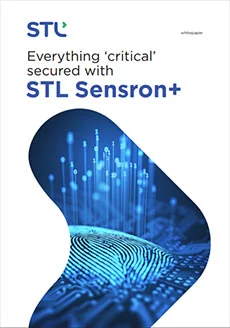Everything critical secured with STL Sensron+
Critical infrastructure systems and facilities are fundamental to driving modern society, providing the necessary basic services that form a foundation for nearly all other activities.
This paper seeks to highlight the effectiveness that can be brought about by infusing technology into security setups around the world. As we proceed, we will look at an overview of critical infrastructure and challenges. We will elaborate on the foundational components of a successful critical infrastructure security strategy. We intend to use this as a “best practice” primer for securing critical infrastructure.
Critical infrastructure and why they must be protected
Before we embark on our journey to understand why critical infrastructure needs to be protected, let us try and understand what constitutes critical infrastructure.
Critical infrastructure, by definition, comprises “the assets, and systems”, so vital to a nation that their incapacitation or destruction would have a debilitating effect on security, national economic security, national public health or safety, or any combination thereof.
| Sector | Critical Infrastructure | ||
| Energy | Nuclear Reactor, Materials, and Waste Chemical facilities Oil and Gas pipelines Off-shore rigs |
||
| Information and Communications Technology | Research and development centres Data centres Communication network infrastructure |
||
| Manufacturing | Critical manufacturing units | ||
| Defence | Defence industrial bases Military camps Cantonments Naval establishments Air force bases Border areas |
||
| Food and Agriculture | National knowledge research centre Research centres Storage facilities |
||
| Transportation | State wide transport networks | ||
| Healthcare | Hospitals Research and development centres |
||
| Government Facilities | Critical government offices | Water and wastewater management systems | Dams |



